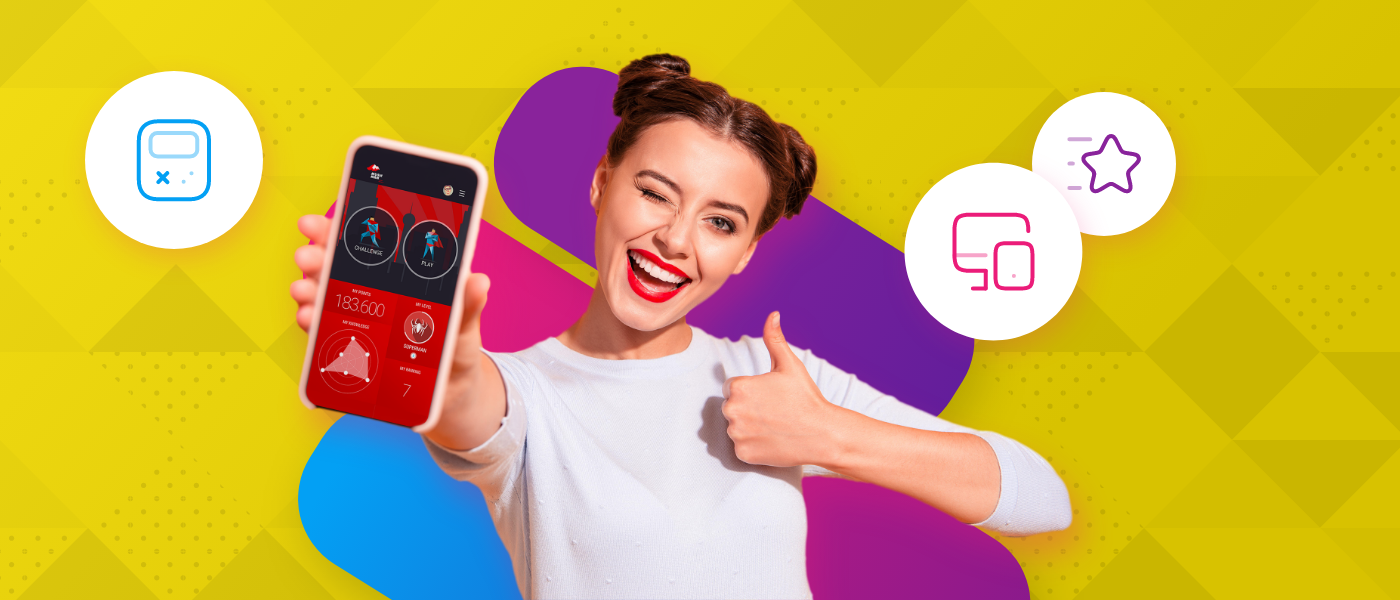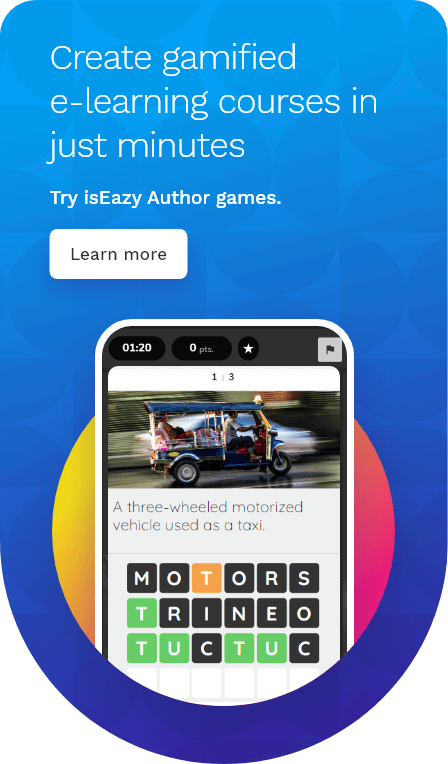Table of contents
ToggleGamification has experienced significant growth in the education sector over the last few years thanks to its capacity for increasing knowledge retention and motivating learners. In a business context, it can also be used to help employees achieve goals and objectives, and foster their commitment to the company they work for.
By applying game-based dynamics and principles, training managers can improve the learning experience and encourage active participation among employees through elements like badges, points, challenges, and rankings.
But gamification goes far beyond turning a task into a game, taking into account an organization’s strategic objectives to not only make learning a more enjoyable experience, but also reach training objectives.
In this article, we explore the different types of gamification you can apply to your training, along with tools for implementing a game-based learning strategy in your company.
Key processes for implementing gamification
The implementation of gamification techniques in the corporate learning space requires a careful, structured approach which takes into consideration training objectives, user experience, gaming mechanics and feedback.
1. Defining objectives and designing the gamification experience
Before implementing any strategy, it’s essential to clearly define its objectives and gamification is no exception. One of the key processes in implementing a gamification plan is defining the behaviors or actions that should be incentivized. Additionally, it is important to specify your target audience since the elements and gaming mechanics used may vary based on user profiles. With these points clarified, you can focus on designing the gamification experience.
2. Choosing the appropriate gaming mechanics
Gaming mechanics are the rules or dynamics that guide user behavior during the process. These mechanics represent progress for users, for example, completing a level, achieving a milestone, or outperforming a rival. The most commonly used gamification mechanics are known as PBL: Points, Badges, and Leaderboards.
Users can earn points by performing certain actions or interacting with their peers, making them a popular feature for monitoring performance, while badges represent progress and are often used to recognize or reward achievements.
Leaderboards appeal to emotions, giving users the opportunity to see their name at the top of the weekly board and be recognized for their efforts. These leaderboards can differ based on criteria, such as a users’ ability to solve an activity or the time taken to complete it.
3. Incorporating narrative elements
Narratives are essential for immersing users in the learning experience. Developing one involves defining characters and scenarios, and creating a compelling story that makes learning captivating and meaningful for participants.
4. Integration and feedback
Integrating gamification into existing learning processes should be logical and natural. The gamification design ensures that gaming elements do not distract users from the content but instead increase engagement and improve the overall learning experience. Constant and immediate feedback is another crucial consideration; users should receive feedback on their progress and achievements to keep them motivated.
Types of gamification: Exploring different strategies
Gamification is not a one-size-fits-all approach; depending on the needs and objectives of your training, there are many ways to implement gamification in your company training.
- Achievement and reward-based gamification
This type of gamification focuses on individual goal achievement and challenges. Users set personal learning goals and receive rewards as they accomplish them, making it ideal for promoting self-development.
- Social and collaborative gamification
Also known as cooperative gamification, this approach revolves around collaboration and teamwork. Users must work together to overcome shared challenges and achieve collective objectives. This type of gamification is suitable for group training environments focused on developing skills like teamwork.
- Level-based gamification
With a level-based gamification strategy, the learning process is divided into stages. A user must pass through each one in order to advance, coming into contact with increasingly complex challenges and rewards along the way that are designed to boost motivation.
isEazy Engage: the leading tool for gamification
Once you have decided on the processes and types of gamification you want to implement in your company, it’s time to decide on the software to help you do so.
In order to make sure your gamified training is effective, be sure to opt for a tool that allows you to incorporate a variety of elements, narratives, and other key functionalities with ease.
isEazy Game is a leading gamification solution that helps to transform training into a unique and fun experience through games, challenges, rankings, levels, and more. The platform also incorporates social and collaborative dynamics to encourage active participation among your employees.
With isEazy Game, you can choose the format that best suits your training objectives and enrich content with audio, videos, images, and other resources, all designed to maximize engagement.
It also offers assessment functionalities that allow you to analyze the progress of each employee and improve your gamification strategy in the future.
Gamify your training and improve your learning experience with isEazy Game.













